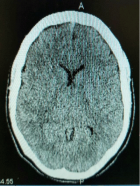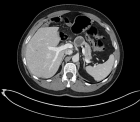Abstract
Thesis
Impedance audiometry: Stapedial reflex eliciting conditions
Mojmír Lejska*
Published: 20 September, 2017 | Volume 1 - Issue 1 | Pages: 060-068
The work is an attempt to create a complete system of conditions which influence genesis, existence, and response characteristics of stapedial reflex in impedance audiometry. The author divides the conditions into the internal-reflex arc integrity, temporal acoustic summation, mixed-external auditory meatus and middle ear, and internal-side of stimulation and energy content of the stimulus. The system of conditions that influence stapedial reflex is based on a criterion, that stapedial reflex depends on energy, which is percepted by the inner ear as subjective loudness. The system of conditions stated in this work is based mainly on the author’s own experiments and measurements, which are herein also documented. At the same time, these results are in accordance with data in literature as quoted. This system is not closed-it potentially may be completed using the basic criterion and further knowledge.
Read Full Article HTML DOI: 10.29328/journal.hor.1001011 Cite this Article Read Full Article PDF
Keywords:
Impedance audiometry; Stapedial Reflex eliciting conditions
References
- Borg E. On the neuronel organization of the acoustic middle ear reflex. A physiologocal and anatomical study. Brain Res. 1973; 49; 101-123. Ref.: https://goo.gl/PNRZFm
- Jerger J, Northern JL. Clinical Impedance Audiometry. First Edition. Acton Massachusetts: American electromedics corporation. 1975; 226.
- Jerger J, Northern JL. Clinical Impedance Audiometry. Second Editon. Acton Massachusetts: American electromedics corporation. 1980; 231.
- Lloyd EL. Auditory Assessment of the Difficult-to-Test. Baltimore USA. The Williams and Wilkins Co. 1975.
- Sinělnikov RD. Atlas anatomie člověka, Praha. Avicenum. 1970; 391. Ref.: https://goo.gl/6e8gkZ
- Rossi G, Solero P, Rolando M. Influence of stimulus duration and intensity on acoustic reflex parameters. Acta Otolaryngol. 1985; 99: 348-352. Ref.: https://goo.gl/1r5zkW
- Lejska M, Lejska V, Havlík R. Změny akustického signálu ve vnějším zvukovodu u OMS (Otitis media secretorica). Otorinolaryngol. 1996; 45: 27-30.
- Lejska M, Havlík R, Lejska V, Bártková E. Vnitřní parametry rezonance vnějšího zvukovodu. Choroby hlavy a krku. 1997; 6: 22-24. Ref.: https://goo.gl/yuCnf8
- Mejzlík J, Pellant K, Pellant A. Akustika zevního zvukovodu-předpokládaný spolučinitel poškození vláskových buněk při dlouhodobé expozici hlukem. Head and Neck Disease. 1999; 7: 5-7. Ref.: https://goo.gl/cXnfV3
- Novák A. Poruchy komunikačního procesu způsobené sluchovými vadami. Foniatrie a pedaudiologie.1994; 105. Ref.: https://goo.gl/KYJytU
- Pellant K, Mejzlík J, Pellant A. Determination of selected acoustic characteristics of the external auditory duct using mathematical modeling. Nationwide Congress of ENT and Head and Neck Surgery. 2000; 6: 38.
- Pierson LL, Gerhardt KJ, Rodriguez GP, Yanke RB. Relationship between outer ear resonance and noise induced hearing loss. Am.J.Otolaryngol. 1994; 15: 37-40. Ref.: https://goo.gl/QCuK9Z
- Stinson MR, Lawton BV. Specification of the geometry of the human ear canal for the prediction of sound-pressure level distribution. J Acous So Am. 1989; 85: 2492-2503. Ref.: https://goo.gl/Wo13bm
- Westwood GF, Bamford JM. Probe-tube microphone measurements with very young infants. Br J Audiol. 1992; 26: 143-151. Ref.: https://goo.gl/8pX1Yy
- Syka J, Voldřich L, Brabec F. Fyziologie a patofyziologie zraku a sluchu. Avicenum. 1981; 312. Ref.: https://goo.gl/1WLyvZ
- Pospíšil M, Zeman M, Lejska M. Vliv průchodnosti Eustachovy trubice na práh třmínkového reflexu u normálních jedinců a závodních plavců. Brno, Audiologie MěÚNZ, Studentská práce. 1987; 68.
- Lejska M, Plch J, Bystrý J. The alterations of stapedial reflex threshold caused by controlled changes of external auditory canal pressure. First European conference on audiology. British Journal of Audiology. 1992.
- Feldman AS. Acoustic impedance measurement of post-stapedectomized ears. Laryngoscope.1969; 79: 1132-1155. Ref.: https://goo.gl/AAy1ub
- Gerult G, Giesen M, Mrowiski D. Die komplexe Trommelfellimpedanz bei verschiedenen Mittelohrhörschäden. Arch Otorhinolaryngol. 1978; 219: 406-407. Ref.: https://goo.gl/B8VFSQ
- Gvelesiani TG. Akustičeskaja reflektomerija při normalnom i patologičeskom sostajanii organa slucha.
- Kinney SE, HuhgesGB. Otosclerosis. In: Textbook of clinical Otology. Stuttgart: G.Thieme Verlag. 1985.
- Koch U. The adhesive process. Part II: Research on pathogenesis (author's transl). Laryngol Rhinol Otol (Stuttg). 1980; 59: 655-665. Ref.: https://goo.gl/B5p7XC
- Kollá A. Artefakty při ipsilaterálním měření akustického třmínkového reflexu. Otorinolaryngol.1997; 46: 185-187.
- Lehnhardt E. Praktische Audiometrie. Stuttgart: G.Thieme Verlag. 1978; 222. Ref.: https://goo.gl/mkV6Xn
- Lejsk M. Inversní odpověď ipsilaterálně vyvolaného třmínkového reflexu v impedanční audiometrii. Kandidátská disertační práce, Brno. 1991; 122.
- Moser LM. The diagnosis of conductive hearing loss by tympanometry (author's transl). Laryngol Rhinol Otol (Stuttg). 1975; 54: 369-371. Ref.: https://goo.gl/gvS2RE
- Wedel von H, Pau H-W, Teglmeier W. Ein Beitrag zum „akustisch-mechanischen Effekt“ bei der ipsilateralen Stapediusreflexregistrierung. Laryng Rhinol. 1980; 59: 548-556. Ref.: https://goo.gl/skk5Kk
- Wurzer H, Schorn K. Impedanzmessung und Otosklerose. Laryngol Rhinol Otol (Stuttg). 1978; 57: 739-744. Ref.: https://goo.gl/UyCocW
- Lejska M, Plch J, Kruta V. Existence reflexní odpovědi třmínkového svalu při ipsilaterální akustické stimulaci. Čs. Otorinolaryng Foniatr. 1992; 41: 362-365.
- McMillan RM, Marchant CD, Sturin PA, Johnson CE. Ipsilateral acoustic reflex in infants. Ann Otol Rhinol Laryngol. 1985; 94: 145-148. Ref.: https://goo.gl/vH1vuc
- Chüden HG, Heid F. Clinical experience with ipsilateral impedance audiometry (author's transl). Laryngol Rhinol Otol (Stuttg). 1982; 61, 399-401. Ref.: https://goo.gl/XAxY5J
- Butenko LN, Limar DJa, Mozor DC, Kulikova MV. Significance of the acoustic reflex of musculus stapedius during ipsilateral sonic stimulation in the diagnosis of neurosenzory hearing impairment. Vestn.Otorino-laring. 1980; 2: 61-65.
- Lejska M. Současný pohled na tympanometrii. In: Zborník prác z 1. pracovních dní mladých otolaryngologov. Bratislava. 1986; 74-81.
- Sagalovich BM, Tsukanova VN. Diagnostic implication of the ipsilateral acoustic reflex recording and artefacts in impedancmetry. Vestn. Otorino-laring. 1980; 4: 20-25.
- Spraque BH, Wiley TL, Goldstein R. Tympanometric and acoustic reflex studies in neonales. J Speech Hear Res. 1985; 28: 265-272. Ref.: https://goo.gl/cmEAb1
- Zakrisson JE. Experimental studies on the function of the stapedius muscle in man. Umea . University medical dissertations: 1974; 3: 18. Ref.: https://goo.gl/GU5K43
- Draskovich E, Székely T. Diagnostic value of the stapedial reflex examination by facial palsy (author's transl). HNO. 1981; 29; 222-224. Ref.: https://goo.gl/TAQFWZ
- Lejska M et al. Základy praktické audiologie a audiometrie. Brno. IDVZP. 1994; 171. Ref.: https://goo.gl/Y1BxXn
- Lejska M, Lejska V, Havlík R. Změny akustického signálu ve vnějším zvukovodu u OMS (Otitis media secretorica). Otorinolaryngol. 1996; 45: 27-30.
- Weidauer H, Lenarz T. Behavior of the stapedius reflex in long-term acoustic stimulation. Laryngol Rhinol Otol (Stuttg). 1982; 61: 674-677. Ref.: https://goo.gl/65yYDY
- Margoli RH, Levine SC. Acoustic Reflex Measures in Audiologic Evaluation. Otolaryngol Clin North Am. 1991; 24: 329-347. Ref.: https://goo.gl/jue6Xe
- Butenk LM. Threshold characteristics of the acoustic reflex of the middle ear muscles during ipsilateral sound stimulation.1984; 6: 32-35.
- Jepsen O. Studies on the acoustic stapedius reflex in man. Measurement of the acoustic impedance of the tympanic membrane in normal individuals and in patients with peripheral facial palsy. Thesis.1955.
- Wurzer H. Stapediusreflex: Stapediusreflexschwelle und Recruitment. Laryngol Rhinol Otol (Stuttg). 1983; 62: 289-292. Ref.: https://goo.gl/Qbrqd8
- Freeman S, Zaardira S, SohmerH. Concomitant changes in the acoustic impedance and the cochlear microphonic potentials during switch contractions of the middle ear muscles in cats. Arch Otorhinolaryng. 1988; 245: 311-315. Ref.: https://goo.gl/nmMmuz
- Peake WT, Rosowski JJ. Impedance matching, optimum velocity and ideal middle ears. Hear Res. 1991; 53: 1-6. Ref.: https://goo.gl/g6zDpJ
- Lejska M, Plch J, Kruta V. Vliv délky stimulace na parametry reflexní odpovědi třmínkového svalu. Otorinolaryngol.1994; 43: 22-24.
- Margolis RH, Dubno JR, Wilson RH. Acousticreflex threshold for noise stimuli. J Acoust Soc Am. 1980; 68: 892-897. Ref.: https://goo.gl/JgR25E
- Green KW, Margolis RH. Detection of hearing loss with ipsilateral acoustic reflex thresholds. Audiology. 1983; 22: 471-474. Ref.: https://goo.gl/eY274g
- Green KW, Margolis RH. The ipsilateral acoustic reflex. Orlando USA. 1984; 276.
- Lejska M. Třmínkový reflex: Parametry vyvolávajícího akustického stimulu. XXXVI. pracovní den komise pro audiologii a kofochirurgii. Praha. 1996.
- Flottorp G, Djupesland G,Winter FO. The acoustic stapedius reflex in relation to critical bandwidth. J Acoust Soc Amer. 1971; 49: 457-458. Ref.: https://goo.gl/qvXHab
- Peterson J, Liden G. Some static characteristics of the stapedial muscle reflex. Audiology. 1972; 11: 97-102. Ref.: https://goo.gl/ACgBoC
- Zwislocki JJ. Temporal summation of loudness an analysis. J Acoust Soc Am. 1969; 46: 431-436. Ref.: https://goo.gl/muqhwG
Figures:

Figure 1

Figure 2

Figure 3
Similar Articles
-
Impedance audiometry: Stapedial reflex eliciting conditionsMojmír Lejska*. Impedance audiometry: Stapedial reflex eliciting conditions. . 2017 doi: 10.29328/journal.hor.1001011; 1: 060-068
Recently Viewed
-
Agriculture High-Quality Development and NutritionZhongsheng Guo*. Agriculture High-Quality Development and Nutrition. Arch Food Nutr Sci. 2024: doi: 10.29328/journal.afns.1001060; 8: 038-040
-
A Low-cost High-throughput Targeted Sequencing for the Accurate Detection of Respiratory Tract PathogenChangyan Ju, Chengbosen Zhou, Zhezhi Deng, Jingwei Gao, Weizhao Jiang, Hanbing Zeng, Haiwei Huang, Yongxiang Duan, David X Deng*. A Low-cost High-throughput Targeted Sequencing for the Accurate Detection of Respiratory Tract Pathogen. Int J Clin Virol. 2024: doi: 10.29328/journal.ijcv.1001056; 8: 001-007
-
A Comparative Study of Metoprolol and Amlodipine on Mortality, Disability and Complication in Acute StrokeJayantee Kalita*,Dhiraj Kumar,Nagendra B Gutti,Sandeep K Gupta,Anadi Mishra,Vivek Singh. A Comparative Study of Metoprolol and Amlodipine on Mortality, Disability and Complication in Acute Stroke. J Neurosci Neurol Disord. 2025: doi: 10.29328/journal.jnnd.1001108; 9: 039-045
-
Development of qualitative GC MS method for simultaneous identification of PM-CCM a modified illicit drugs preparation and its modern-day application in drug-facilitated crimesBhagat Singh*,Satish R Nailkar,Chetansen A Bhadkambekar,Suneel Prajapati,Sukhminder Kaur. Development of qualitative GC MS method for simultaneous identification of PM-CCM a modified illicit drugs preparation and its modern-day application in drug-facilitated crimes. J Forensic Sci Res. 2023: doi: 10.29328/journal.jfsr.1001043; 7: 004-010
-
A Gateway to Metal Resistance: Bacterial Response to Heavy Metal Toxicity in the Biological EnvironmentLoai Aljerf*,Nuha AlMasri. A Gateway to Metal Resistance: Bacterial Response to Heavy Metal Toxicity in the Biological Environment. Ann Adv Chem. 2018: doi: 10.29328/journal.aac.1001012; 2: 032-044
Most Viewed
-
Evaluation of Biostimulants Based on Recovered Protein Hydrolysates from Animal By-products as Plant Growth EnhancersH Pérez-Aguilar*, M Lacruz-Asaro, F Arán-Ais. Evaluation of Biostimulants Based on Recovered Protein Hydrolysates from Animal By-products as Plant Growth Enhancers. J Plant Sci Phytopathol. 2023 doi: 10.29328/journal.jpsp.1001104; 7: 042-047
-
Sinonasal Myxoma Extending into the Orbit in a 4-Year Old: A Case PresentationJulian A Purrinos*, Ramzi Younis. Sinonasal Myxoma Extending into the Orbit in a 4-Year Old: A Case Presentation. Arch Case Rep. 2024 doi: 10.29328/journal.acr.1001099; 8: 075-077
-
Feasibility study of magnetic sensing for detecting single-neuron action potentialsDenis Tonini,Kai Wu,Renata Saha,Jian-Ping Wang*. Feasibility study of magnetic sensing for detecting single-neuron action potentials. Ann Biomed Sci Eng. 2022 doi: 10.29328/journal.abse.1001018; 6: 019-029
-
Pediatric Dysgerminoma: Unveiling a Rare Ovarian TumorFaten Limaiem*, Khalil Saffar, Ahmed Halouani. Pediatric Dysgerminoma: Unveiling a Rare Ovarian Tumor. Arch Case Rep. 2024 doi: 10.29328/journal.acr.1001087; 8: 010-013
-
Physical activity can change the physiological and psychological circumstances during COVID-19 pandemic: A narrative reviewKhashayar Maroufi*. Physical activity can change the physiological and psychological circumstances during COVID-19 pandemic: A narrative review. J Sports Med Ther. 2021 doi: 10.29328/journal.jsmt.1001051; 6: 001-007

HSPI: We're glad you're here. Please click "create a new Query" if you are a new visitor to our website and need further information from us.
If you are already a member of our network and need to keep track of any developments regarding a question you have already submitted, click "take me to my Query."



















































































































































